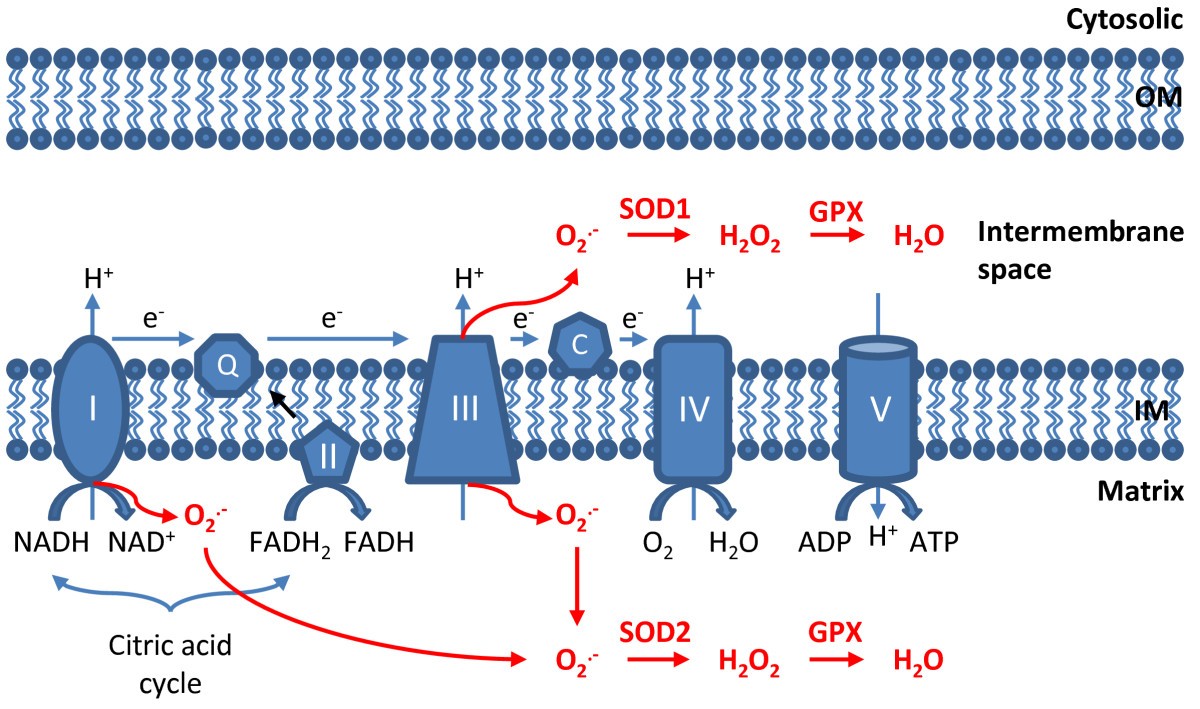Mitochondria: Reactive Oxygen Species
Posted on May 15, 2019 at 4:00 PM

Mitochondria make energy (in the form of ATP) by breaking down food with the help of inhaled oxygen. In this process, they also dump waste: carbon dioxide (we exhale out), water (we pee out) and free radicals called reactive oxygen species (ROS). These charged particles seek anything to achieve stability. They'll bind to neighboring mitochondria, bacteria, viruses, other oxygen molecules, or any other molecules floating around, including the body’s own DNA. These free radicals are desperate to attach to something near them. They cause destruction. Sometimes, the destruction is good. Free radicals can kill infections. Other times, the destruction causes diseases and aging and self-destruction.

For the Scientist: The production of mitochondrial ROS mainly takes place at the electron transport chain (ETC) located on the inner mitochondrial membrane during the process of oxidative phosphorylation (OXPHOS). Leakage of electrons at complexes I and III of the ETC leads to the partial reduction of oxygen to form superoxide. Subsequently, superoxide is quickly dismutated to hydrogen peroxide by two dismutases including superoxide dismutase 2 (SOD2) in the mitochondrial matrix and superoxide dismutase 1 (SOD1) in the mitochondrial intermembrane space. Collectively, both the superoxide and hydrogen peroxide generated in this process are considered to be mitochondrial ROS.

Mitochondrial ROS were initially thought to be merely by-products of cellular metabolism, but they are increasingly being viewed as important signaling molecules. At low levels, mitochondrial ROS are considered to be important for metabolic adaptation, as seen in hypoxia. They are also involved in regulating the inflammatory response. High levels of mitochondrial ROS activate apoptosis/autophagy pathways capable of inducing cell death.
Image References:
Other Mitochondria Links:
- Mitochondria: Reactive oxygen species
- Mitochondria and Immune
- Mitochondria and Aging
- Mitochondrial Bioenergetics
- Mitochondrial involvement in cell death
- Mitochondrial fission/fusion
- Mitochondrial Function
- Mitochondria: Heat
- Mitochondrial Heteroplasmy
- History of Mitochondria
- Mitochondrial vs. Nuclear DNA
- Mitochondrial Oxidative Phosphorylation
- Mitochondrial death: mitophagy
- Mitochondrial diseases
- Mitochondrial Requirements
- Mitochondrial and Toxins